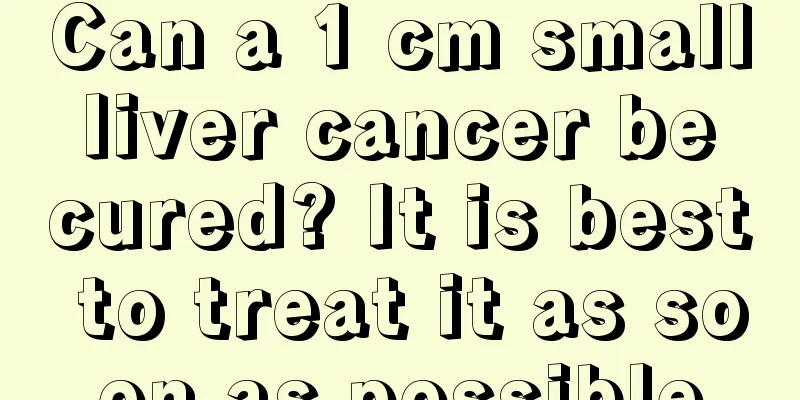Sequelae caused by cerebral hemorrhage

|
Cerebral hemorrhage mainly refers to the rupture of blood vessels inside the brain due to non-traumatic reasons. Cerebral hemorrhage may be caused by diseases such as hypertension and diabetes. Cerebral hemorrhage is a particularly serious disease with a very high mortality rate. Even if the patient is eventually cured, many sequelae may remain. This requires patients to pay more attention to their physical condition after surgery. 1. Limb dysfunction mainly manifests as sensory and motor dysfunction on the hemiplegic side 2. Cognitive and mental disorders: Cerebral hemorrhage with a large scope or multiple recurrences may leave mental and cognitive disorders: such as personality changes, pessimism, depression, mental depression, irritability, etc. 3. Speech dysfunction. 4. Swallowing dysfunction. 5. Other symptoms include headache, dizziness, nausea, insomnia, nightmares, inattention, tinnitus, blurred vision, sweating, palpitations, unsteady steps, neck pain, fatigue, weakness, loss of appetite, memory loss, dementia, depression, etc. treat Rehabilitation treatment during the recovery period is very important for patients with sequelae of cerebral hemorrhage. 1. Rehabilitation functional exercise (1) Functional exercises for facial paralysis. (2) Language and swallowing function training. (3) Training of cognitive functions. (4) Limb function training: ① Transfer training; ② Passive joint movement; ③Induce active movement of the patient; ④Hand function training; ⑤Training of balance and coordination ability; ⑥ Walking function training, etc. 2. Physical therapy mainly includes functional electrical stimulation, biofeedback, transcranial magnetic stimulation, sequential cycle therapy, etc. prevention 1. When there is high blood pressure, hypertensive encephalopathy or bleeding tendency, timely and active treatment should be sought to avoid cerebral hemorrhage. 2. Understand the usage, effects and side effects of drugs related to the sequelae of cerebral hemorrhage. 3. Patients and their families with sequelae of cerebral hemorrhage should master the basic knowledge of cerebrovascular disease prevention and treatment, and understand the risk factors and inducing factors of cerebral hemorrhage. 4. Live a healthy lifestyle, eat a healthy diet, and quit smoking and drinking. 5. Pay attention to the precursor signs of sequelae of cerebral hemorrhage. If you find dizziness, headache, limb numbness, drowsiness, and abnormal personality, take treatment measures to avoid the occurrence of sequelae of cerebral hemorrhage. 6. Your daily diet should be light, low in salt and fat, and you should eat less greasy food and animal fat to avoid high blood lipids and promote arteriosclerosis. 7. Avoid excessive physical and mental work. Overwork can induce cerebral hemorrhage. |
<<: What happens if you drink alcohol when you have herpes zoster
>>: Alanine aminotransferase and bilirubin are high
Recommend
How to recover from elbow joint stiffness
People's joints will undergo some changes as ...
What should I do if I dye my hair while pregnant
Women are generally prohibited from using any cos...
The harm of eating paper to the human body
As adults, none of us would eat toilet paper for ...
How long does it take for the six hormone test results to come out
In life, many people will suffer from various dis...
How does traditional Chinese medicine treat lung cancer? 4 methods of treating lung cancer with traditional Chinese medicine
Lung cancer can cause pain and coughing up blood,...
What is the difference between nano-traceless and thread embedding
There are three main methods for double eyelid su...
What should I do if I have esophageal cancer and can't eat
What should I do if I have esophageal cancer and ...
Homemade black hair dye
Graying hair troubles many people. Weak kidney qi...
What causes frequent nosebleeds
Nosebleed can be said to be a symptom, and many d...
Is esophageal cancer hereditary?
Esophageal cancer is a malignant tumor that occur...
Where are the salivary glands?
Saliva is a secretion produced by the salivary gl...
What causes lung cancer headaches
Headaches in lung cancer patients may be related ...
Total bile acid high 60
If the total bile acid exceeds 60, it will be dan...
Early symptoms of vulvar melanoma
Vulvar melanoma usually has no early symptoms, bu...
How to correct flat feet
Healthy people have arches on the soles of their ...









